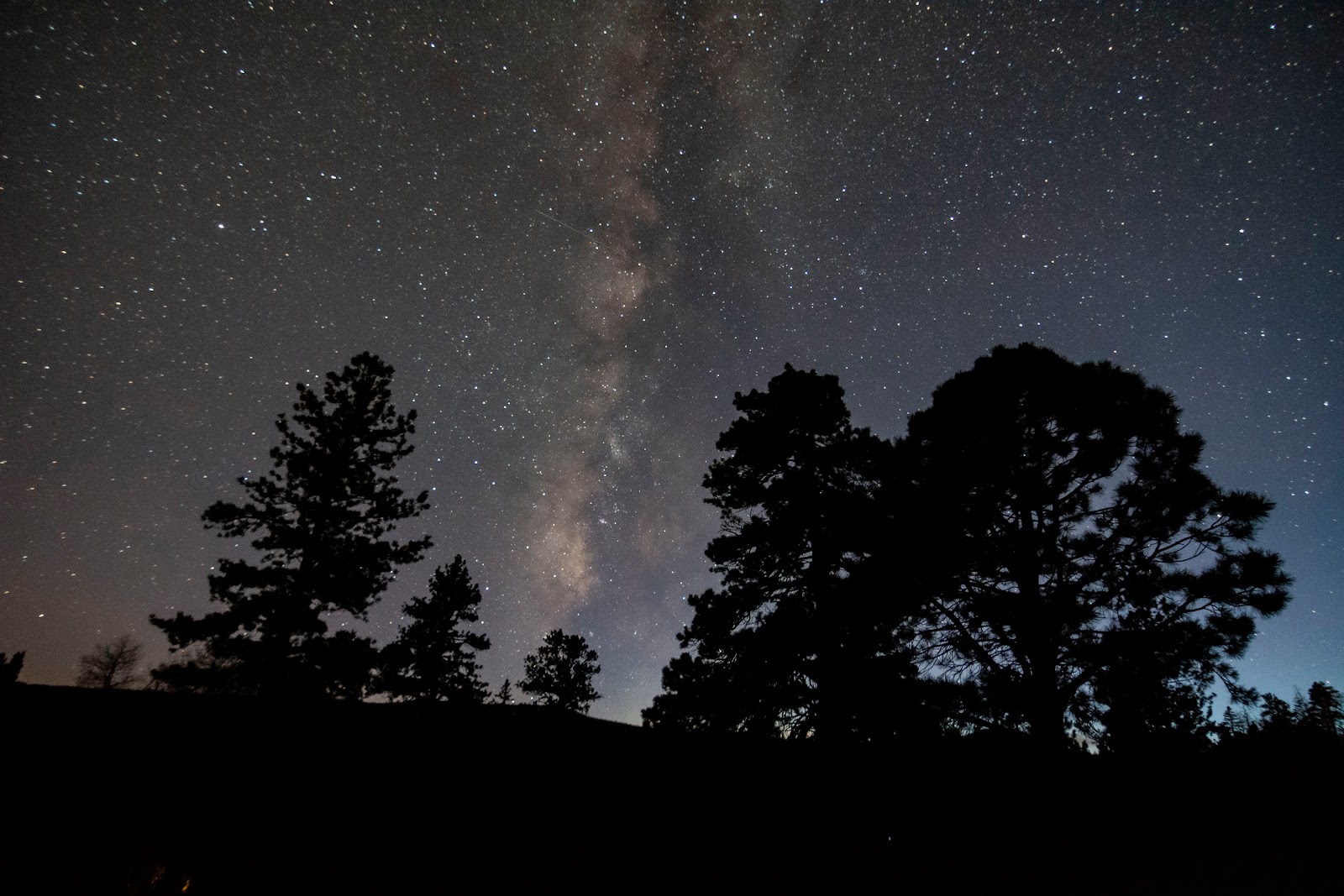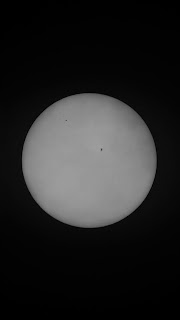Introduction and Monthly Reminders
April has been a great month for stargazing and other astronomy events. Partly cloudy skies hovered over Utah on the 8th for the eclipse, interfering with the views. However, the mainly clear skies have been good for viewing Messier objects and other DSOs, planets, meteors, the Moon, and the Sun with proper eye protection! I was able to travel to the path of totality to experience the full total solar eclipse. I plan on a short post detailing this experience, including images, in the coming days.
While, in my opinion, the astronomy highlight of April has passed, there are still some sights to see during the remainder of the month. There are still three planetary conjunctions this month; Mercury and Venus on the 18th, Jupiter and Uranus on the 20th, and Mars and Neptune on the 28th. Observers will also be able to view the Lyrid Meteor Shower, which peaks on the 22nd, but due to a Full Moon, it will be best to catch these meteors the week before or after the peak date. Don't forget that the Sun and Moon are also delightful to observe when using the proper filters. Many DSOs can also be viewed as the temperatures warm up.
Saturn
Like the rest of the solar system, Saturn is estimated to have formed about 4.5 billion years ago. About 4 billion years ago, Saturn settled into its current orbit, approximately 9.5 Astronomical Units (AU) from the Sun. Saturn was the furthest known planet to exist before the use of telescopes. This planet gets its name from Jupiter's father, the Roman god of agriculture and wealth.
Saturn is the sixth planet from the Sun and the second largest planet in the solar system, after Jupiter. Just over nine Earth-sized planets would span the diameter of Saturn. If the rings are included, it would take over 21 Earth-sized planets to fill the distance. Like the Sun and Jupiter. Saturn is mostly made up of hydrogen and helium. Unlike Jupiter and the Sun, Saturn is less dense than water, meaning that if a swimming pool was large enough, Saturn would float on top like a beach ball!
All the gas giants have a ring system, but none are as impressive as Saturn's. A large pair of astronomy (giant) binoculars or a small telescope can easily reveal the rings of this majestic planet. The rings span 175,000 miles but only vary in height by about 30 feet. The rings are mostly made up of chunks of rock and ice varying in size from small pebbles to mountains. It is theorized that the rings were created by small moons crashing into each other and ice volcanoes on the surface of existing moons spewing out material. The exact age of the rings is unknown, but they are expected to have formed a few million years ago. The gaps that can be seen between the rings through a telescope or in pictures are created by the moons' orbits. There are several distinct rings of Saturn, which are named, moving outward from the planet, D, C, B, A, F, G, and E. The A, B, and C rings are the main rings of Saturn. The famous Cassini Division, a dark area between the rings, is between the A and B rings.
As of June 2023, Saturn has 146 known moons, more than any other planet in the solar system. Titan is the largest moon, greater in size than Pluto and Mercury. It also has an atmosphere and is the only other body in the solar system with liquid on its surface. The surface of Titan is too cold to have liquid water, but it is just right to have liquid methane and ethane on its surface. It even rains this material and has large lakes made up of it. While there is no liquid water on its surface, there may be a subsurface water ocean. The image below was taken from the Cassini mission and shows the hazy atmosphere of Titan.
Enceladus, another enticing moon of Saturn, has ice volcanoes that spew liquid water and ice far above its surface. Like Titan, this moon has no liquid water on its surface but a large, perhaps global, subsurface ocean of liquid water. On the universe timeline, the surface of Enceladus changes rapidly due to the ice volcanoes resurfacing areas like a stationary Zamboni. Below is an image taken by the Cassini mission of Enceladus.
Saturn is also home to Mimas, a moon with a large crater, making it look like the Death Star from Star Wars. Several of the moons of Saturn are not round but are instead shaped like potatoes. The following images were taken by the Cassini mission. The top image is Mimas. Notice the large crater on the right. The lower image is of Hyperion, an oddly shaped and cratered moon of Saturn.
Saturn spins quickly about its axis, taking only 10.7 hours to complete one full rotation. Some individuals have work days longer than this! It takes Saturn about 29.5 Earth years to complete a trip around the Sun. Instead of straight up and down, Saturn's vertical axis is tipped about 26° (Earth is 23.5°), creating seasons on the ringed world. Like Jupiter, the atmosphere of Saturn experiences giant storms, but unfortunately for Earth-bound observers, the storms are hard to detect due to the uniformity in color of Saturn. The pressure below the cloud tops of Saturn is so great that any object would be crushed, melted, and vaporized, much like the fate of the Cassini mission.
In September 1979, Pioneer 11 arrived at Saturn, discovering a new moon and the F ring. This was the first spacecraft to arrive at this planet. Voyager 1 flew by Saturn the following year, providing more information about the rings. In 1981, Voyager 2 passed close by Saturn and sent back information about how thin some of the rings were. Finally, in June of 2004, Cassini arrived at Saturn and was the first to orbit the ringed planet. Huygens from the European Space Agency (ESA) accompanied Cassini. Huygens landed on the surface of Titan, taking measurements of its atmosphere and surface temperatures. It also took pictures of the surface during its descent and landing. Cassini spent 13 years orbiting Saturn, sending back invaluable data on the planet, rings system, and moons. On 15 September 2017, Cassini was sent through the atmosphere of Saturn to be destroyed so it would not contaminate the surface of any of the moons, allowing for the future study and search for potential life.
Currently, there is only one future mission scheduled to return to Saturn. Dragonfly is expected to launch in 2028 and visit Titan. This spacecraft is a larger version of Ingenuity, the drone-sized helicopter of Mars. Having eight blades, Dragonfly will be a quadcopter and will be able to make short flights around the surface of Titan. This moon of Saturn is being targeted by scientists because its atmosphere is similar to Earth's atmosphere 3.5 billion years ago. Dragonfly will help scientists understand the possible starting ingredients for life to exist on a planet similar to the Earth. I hope there will be more missions to Saturn, and I can't wait for all the exciting new discoveries to be made!
Check back soon for my next post!
 |
| Now get outside and look up! |


































